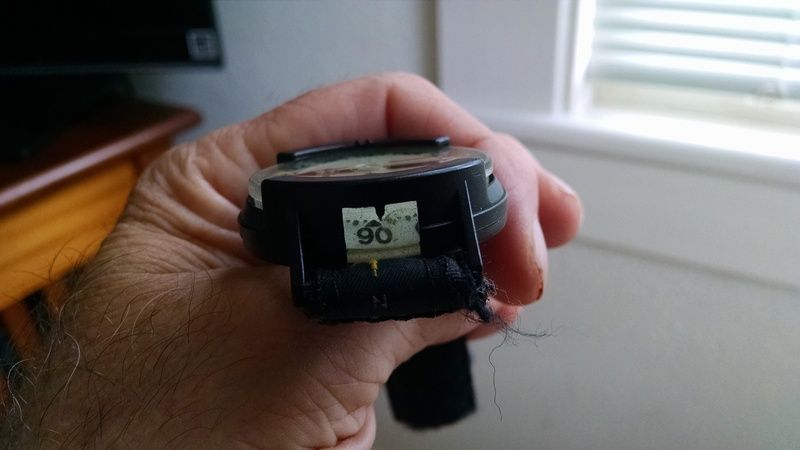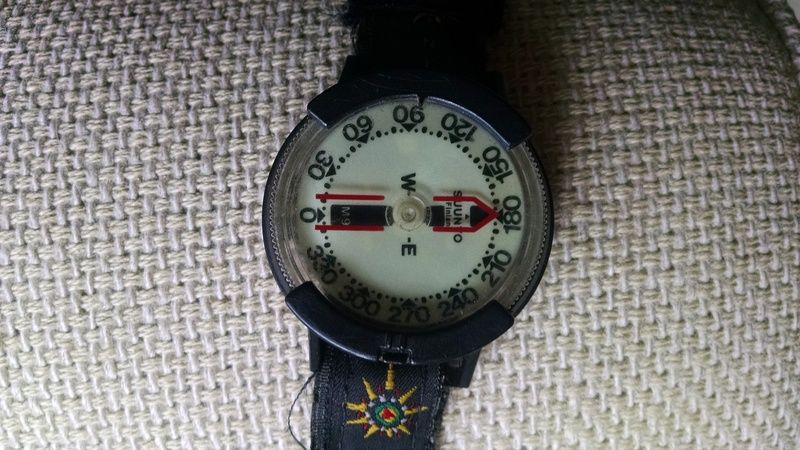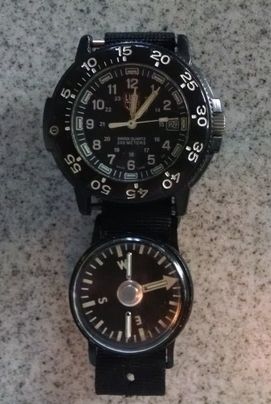My main turkey hunting buddy decades ago was a former USAF navigator on the old Shakey C-124. He used to give me grief about my carrying a compass until a fog bank covered him up turkey hunting. I carry two compasses; one on each wrist. The old Suunto Wrist which works best in daylight as the glow in the dark technology is obsolete compared with Tritium illumination. For dark work, the little Cammenga wrist compass is unequaled in size and utility and has Tritium illumination. I carry it on my wrist band with my watch. The watch is a Luminox, but that is another story. The Suunto has a rotating bezel and sighting port for shooting and holding azimuths. I recommend both for turkey hunting. I lock in on a bird's azimuth in the tree and keep moving. I slightly fall off the azimuth to keep from bumping him which can happen on an exact azimuth. It has paid off many times on shut mouths or infrequent gobbling. I learned this trick from an old Charlie Elliot book and is worth repeating.



If you notice on the Suunto, the bearings appear to be reversed, mirror image and north/south. That's because when you use the sighting port you are reading the bearing of the heading on the opposite side of view port. Suppose I hear a bird in the tree. I have the compass on my right wrist outside the ghillie jacket. I hold my wrist at right angle to the bird. I rotate the bezel until the bezel's N or point matches the needle's point or N. With bezel red lines paralleling the black needle, the window will reveal the azimuth's degrees in the window. As long as I am heading in the direction indicated by centering the arrow with the bezel and right angle to my wrist, I am on course. To find the back azimuth or return direction, I don't touch the bezel but turn the compass until the point of the compass is exactly reversed in the red arrow's lines of the bezel. There are no mathematics involved. The mathematics come in determining annual deviation from true and magnetic north. That's not a factor I need to mess with here in the low country and for turkey hunting it's not important.
Here's a trick with a watch to navigate. The watch must be analog (okay, think Mickey Mouse hands) such as the Luminox in the photo. With the sun visible, point the hour hand at the sun. With a line half way between 12 on the dial and the hour hand and with the line extending through the center of the dial, the line is due south. For example, at high noon, the sun is at its zenith (highest point in the sky) That is directly south. This also coincides with the hour hand being on 12. There are slight differences between daylight and standard time, but this is enough for you to find your bearings. Also, the sun in Georgia is in the Southern Sky. Using this watch trick can be the difference between lost and not lost. Gil